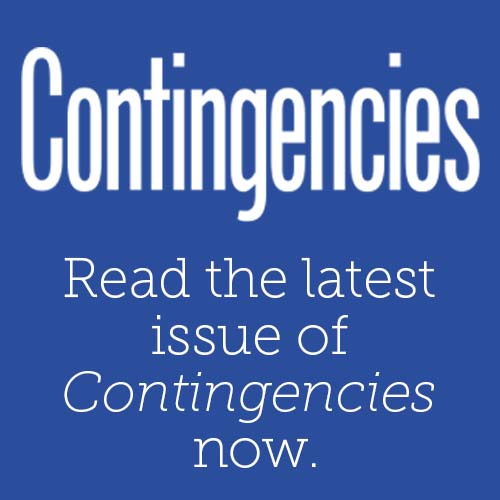Reliance: A Matter of Responsibility
It is common for professionals to rely on others when forming their own opinions. Actuarial standards of practice (ASOPs) recognize this and explicitly refer to the practice. In fact, all ASOPs contain a section on disclosure of such reliance. (It's important to note that reliance may be restricted by some ASOPs, laws, or regulations.) The concept of reliance is discussed in three cross-practice standards that all actuaries should be familiar with: ASOP No. 1, Introductory Actuarial Standard of Practice, the road map for all the other ASOPs; ASOP No. 41, Actuarial Communications, which applies to communications that include an actuarial opinion or other actuarial findings; and ASOP No. 23, Data Quality, considered to apply to all assignments in all practice areas.
ASOP No. l explains that:
Actuaries frequently rely upon others for information and professional judgments that are pertinent to an assignment. Similarly, actuaries often rely upon others to perform some component of an actuarial analysis. Accordingly, some ASOPs permit the actuary to rely in good faith upon such individuals, subject to appropriate disclosure of such reliance, if required by applicable ASOPs (for example, ASOP Nos. 23, Data Quality, and 41).1
But what does ASOP No. 1 mean when it says that you may rely in "good faith" upon others? Former Actuarial Standards Board Chairperson and current Academy President-Elect Maryellen Coggins explains reliance "in good faith" this way:
The actuary's reliance upon others for data and other information is not intended to be passive. The ASOPs generally refer the actuary to the guidance set out in ASOP Nos. 23 and 41. These cross-practice standards anticipate, in effect, that the actuary will assess the reasonableness and suitability of the data or other information received from others and formulate appropriate disclosures. In an important sense, the actuary's assessment of data and information received from a third party effectively forms the basis for the actuary's exercise of reliance "in good faith."2
ASOP No. 41 discusses two basic types of reliance: reliance on other sources for data and information, and reliance on others for assumptions and methods. It defines reliance on other sources for data and information as "making use of those sources without assuming responsibility for them" and permits such reliance, except where the law or other ASOPs limit or prohibit it. But in order to not assume responsibility, you have to disclose your reliance on those sources. And simply disclosing reliance itself is not enough. You should also define the extent of reliance by, for example, stating whether the data has been checked for reasonableness. Whether you need to review the data for reasonableness may depend on the type of data and how familiar you are with it. ASOP No. 41 refers you to ASOP No. 23 for more guidance on your responsibilities when relying on other sources for data and information. 3
Sometimes, you may rely on others for assumptions and methods. In such cases, you should identify the party responsible for each material assumption and method otherwise you take responsibility. What you should disclose depends on whether the assumption or method was set by law or another party. If the assumption or method was set by law, you should disclose the law under which the report was prepared, the assumptions and methods prescribed by that law, and that the report was prepared in accordance with that law.4 If another party selected the assumption or method, you have three choices:
- If you think the assumption or method does not significantly conflict with what would be reasonable for the assignment, you accept responsibility for the assumption or method and have no disclosure obligation.
- If you think the assumption or method significantly conflicts with what would be reasonable for the assignment, you must disclose that fact, the assumption or method set by another party, who set the assumption or method, and why.
- If you cannot judge the reasonableness of the assumption or method without performing a lot of additional work beyond assignment's scope, or if you are not qualified to judge the reasonableness of the assumption, you should disclose that fact. 5
AS0P No. 41 provides guidance on how to communicate about reliance on data or other information supplied by others, but AS0P No. 23 provides essential guidance about what you should do when working with such data. Although those who supply the data are responsible for its accuracy and completeness,6 your use of that data is subject to guidance provided in sections 3.3 and 3.4. In most cases, you should review the data (unless in your professional judgement, such review is not necessary or not practical), making a reasonable effort to determine the definition of each data element and identify questionable data values or significantly inconsistent relationships.7 You should also decide whether the data are of acceptable quality, require enhancement, or require adjustments or assumptions to be applied before performing the analysis. 8 If you believe the data contains significant defects, you should determine the nature and extent of any checks of the data that have been performed and arrange for further review if necessary.9 AS0P No. 23 also provides guidance on what to do if you believe the data are inadequate for an assignment.10
There are two main elements to the appropriate use of reliance in actuarial work-a level of due diligence to ensure that you can appropriately rely on the data and information supplied by others, and disclosure not just of the fact of the reliance, but of the steps you've taken to be confident that such reliance is appropriate.
Footnotes:
- ASOP No. 1, section 2.11.
- Actuarial Update, October 2017, p. 8.
- ASOP No. 41, section 3.4.3.
- ASOP No. 41, sections 3.4.4(a) and 4.2.
- ASOP No. 41, sections 3.4.4(b) and 4.3.
- ASOP No. 23, section 3.5.
- ASOP No. 23, section 3.3.
- ASOP No. 23, section 3.3(a-c).
- ASOP No. 23, section 3.4(d).
- ASOP No. 23, section 3.4(e).







